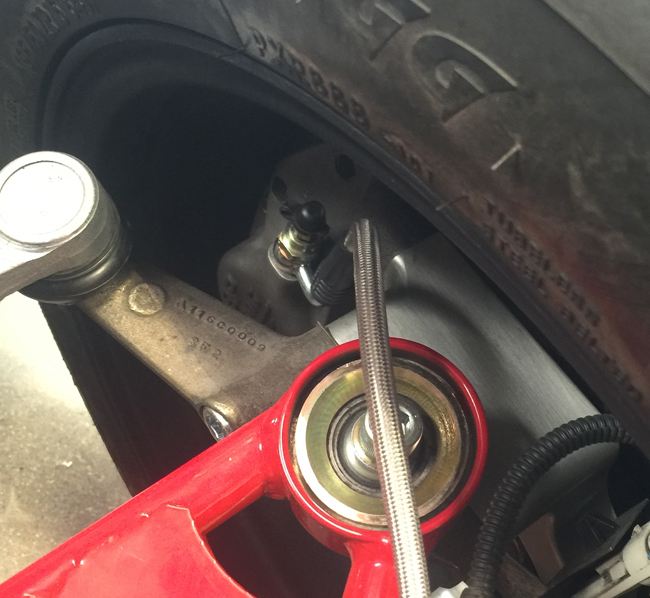It seems sometimes, when it rains, it pours. On one day last week, we had two clients come in with failed OEM rubber brake lines. One of these cars, a '06, had <35k miles and the other, a '05, had 250k miles! One of the cars that failed had a very slow leak and the owner was not paying attention to the reservoir as it was getting drained. The other car, with lower mileage, had a massive failure that kept the owner from bringing the car to us.
These are the first two failures that I had heard about. Early Elises have lines that are now nearly 20years old. Rubber does not last forever and mileage is not necessarily a good measure of when to change them. I'm expecting to hear about more failures, in the coming weeks and months unless owners take preventative measures.
So what can be done? Replace the lines. You can either order new factory rubber lines or upgrade to our Stainless Steel lines. Our lines will most likely, last the lifetime of the vehicle. All of our lines are DOT-spec and encased in a polyurethan housing so that stainless does not saw through any adjacent parts.
Replacing your lines is not overly hard but varies based on which model you have. The Elise front lines can be done without removing the clam - while the Exige requires front clam removal. The rear lines, on both cars, can be done without clam removal.
Our brake line solutions come in a couple of different flavors:
QWKbleed Lines: We recommend this kit for the front calipers as they allow you to bleed both sides of the caliper properly. The stock caliper uses a budget minded approach with the lines entering a port that would normally feature a bleed nipple. Our innovative QWKbleed lines make that port into a bleeder so you can get out all of the air bubbles during the bleeding process.
SS Lines: These are a simple and cost effective upgrade. If you want to save some money and get a solution that works, this is the one. We also sell them in a 2 pack for the rears: HERE
For street cars, we recommend bleeding your brake fluid every year and flushing every 2-3 years. Track guys should be bleeding before every event and flushing once a year. Our Motul RBF600 has been a great solution for road and track.
If your car still has the stock rubber lines, regardless of mileage, I would stongly suggest replacing them ASAP. Have a look at our offerings or give us a call if you have any questions.


